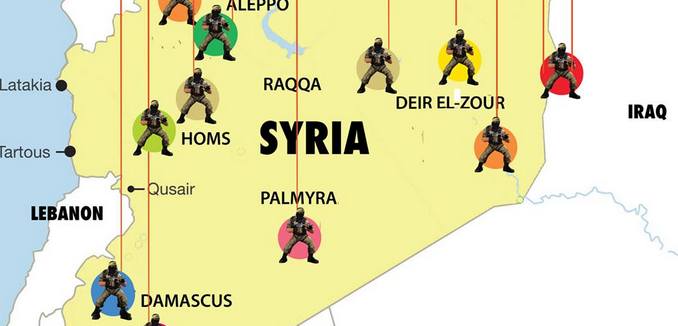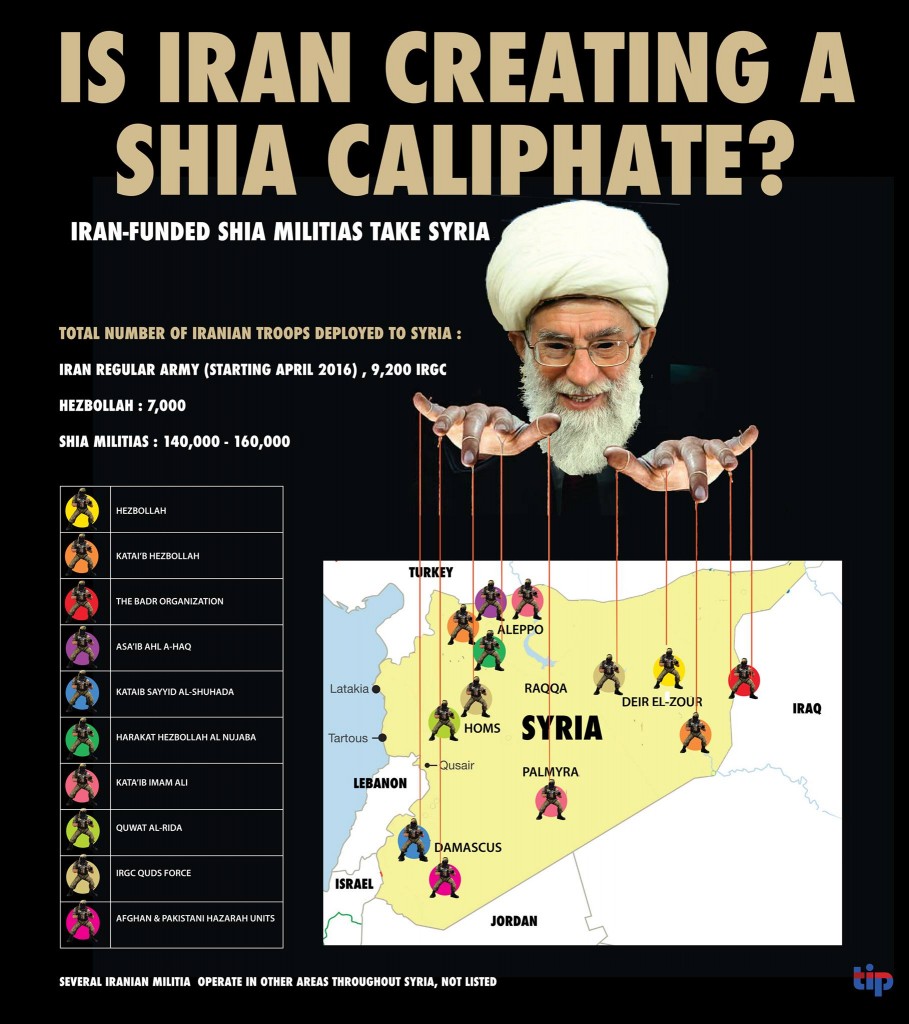Iranian involvement in the Syrian conflict has gradually escalated since the beginning of the uprising in the country in 2011. As the result of international sanctions against Damascus and the drastic weakening of the Syrian economy, Iran has financially propped up the country by granting at least $4.6 billion in credit lines, as well as illicit deliveries of oil and military aid. By mid-2015, it was estimated that total financial support for Syria from Iran amounted to between $6 billion and $20 billion annually.
This aid was granted despite the pressure on the Iranian economy caused by the sanctions, leading to speculation that Tehran would be forced to make a choice between continued expenditure in support of Damascus and domestic priorities. However, the signing of the JCPOA resulted in both the lifting of sanctions and the unfreezing of around $100 billion in assets, considerably reducing pressure on the Iranian economy.
Although Iran had a notable military presence in Syria prior to the nuclear deal, the second half of 2015 saw the beginning of a new influx of direct and indirect assistance. In October of that year, it was reported that hundreds of Iranian troops were arriving in Syria to support a ground offensive in parallel with the then just-commenced Russian airstrikes. By April 2016, it was estimated that between 6,500 and 9,200 IRGC and Iranian paramilitary personnel were stationed in Syria. That same month, Tehran also began to deploy regular Iranian Army troops.
Hezbollah’s involvement in the Syrian Civil War dates back to 2012. At present, an estimated 7,000 fighters are working to support the Assad regime, with the vast majority of their funding—together with training, weapons and logistics support—coming from Iran. Hezbollah fighters play an incredibly important role in crucial offensives and are currently deployed in Deir Ezzour and around Sokneh City, as well as close to the Lebanese border. Ultimately, Tehran’s policy seeks to sustain Syria as a conduit to Hezbollah fighters in Lebanon to allow Iran to maintain ‘resistance’ against Israel.
Tehran has also supported an array of militias, with the U.S. State Department’s Country Reports on Terrorism 2016 asserting that “Iran has facilitated and coerced, through financial or residency enticements, primarily Shia fighters from Afghanistan and Pakistan to participate in the Assad regime’s brutal crackdown in Syria.”
Of the various Iranian-backed militias in Syria, Hashd al-Shaabi, also known as the Popular Mobilization Forces (PMF), is the most powerful one. It is an umbrella organization of Shiite militia forces, some of which have been deployed on behalf of the Assad regime since 2013, with a fighting strength of 60,000-140,000. Hash al-Shaabi affiliated groups also operate across the border in Iraq at the behest of the central government in Baghdad, which maintains strong ties to the regime in Tehran. Human rights organizations have accused these groups of carrying out sectarian violence against Sunni civilians in Syria and Iraq.
Below are highlighted some of the most strategically significant sub-groups from within Hashd al-Shaabi through which Iran is pursuing its hegemonic ambitions in Syria and Iraq and has carved out its own “Shia caliphate.”
• Katai’b Hezbollah (KH) is an Iraqi Shiite militia that formed to fight the American occupation in Iraq and has been used as a spearhead force by the IRGC in Syria. The group is regarded as vicious and extremely loyal to Tehran. KH has also long maintained a presence in northern Syria, fighting in Aleppo and now in Deir Ezzour. The commander of the group, Jamal Jaafar Ibrahimi, widely known by his nom de guerre Abu Mahdi al -Mohandis, was convicted for the American Embassy bombing in Kuwait in 1983 and is a designated terrorist by the U.S. government. He is a close associate of the Quds Force.
• The Badr Organization has ties to the Badr political party in Iraq, but is led by Iranian officers. The group is spearheaded by Hadi Al Amri, who fought on the Iranian side during the Iran-Iraq war and maintains strong ties to Tehran. Under his leadership, the group has overseen flights passing through Iraqi airspace from Iran to Syria containing shipments of weapons in support of the Assad regime. In the Syrian civil war, the Badr Organization has crossed the border from Iraqi Anbar province and deployed fighters to Syria under the banner of the Martyr Muhammad Baqir al-Sadr Forces to push back against Syrian rebels.
• Asa’ib Ahl a-Haq (AAH) is an Iranian-funded Shiite militant organization that was officially founded in January 2006 by Qais al-Khazali as a splinter group from the Mahdi Army. Khazali was recruited in 2006 by the IRGC and AAH fighters have since received extensive training either in Iran or at Hezbollah camps in Lebanon. He was the mastermind behind the kidnapping and killing of four American soldiers in Karbala in 2007. Forces from AAH deployed in Syria are also referred to as the Haidar al -Karar Brigades, which are based in Aleppo and participated in the battle for Aleppo, in which Iranian-backed militia played a central role in helping the Assad regime to retake the city from rebel forces. AAH’s Syrian branch is led by Akram Al Kabi, who is a close associate of Iran’s Supreme leader Ayatollah Ali Khamenei.
• Kataib Sayyid al-Shuhada (KSS) is a Shiite militant group, formed in 2013, and a close ally to KH and the Badr Organization, as well as the IRGC, from which it receives a large portion of its funding. In Syria, the organization operates mainly around the Saida Zeuynab Shrine in southern Damascus, but has increasingly expanded its operations in support of Assad to other areas of the city, as well as into southern Syria. KSS was implicated in the Assad regime’s chemical weapons attack on the Damascus suburb of East Ghouta on August 21, 2013. It was formed by Abu Mustafa al-Sheibani, who holds both Iranian and Iraqi citizenship, and previously lived in the Islamic Republic for many years.
[Photo: The Israel Project / Flickr]





